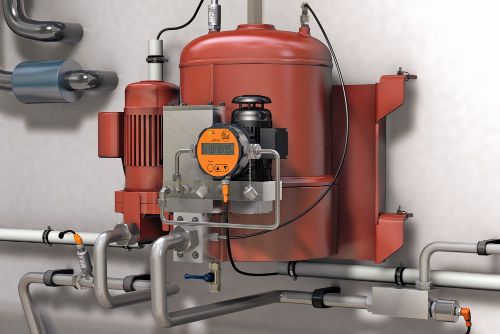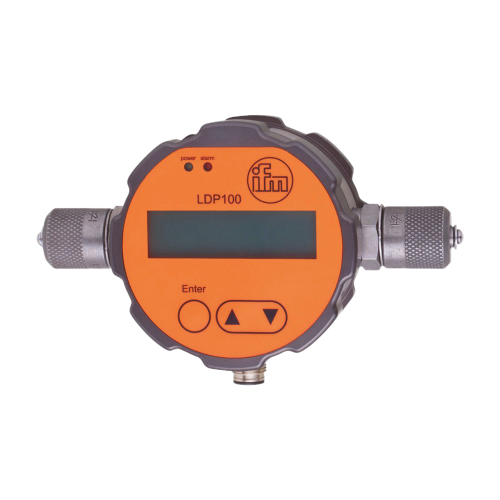Particle counter sensor, LDP

Particle monitoring is the most effective real-time monitoring method to protect oil systems and detect mechanical wear. The LDP100 can be used to monitor the effectiveness of filtration systems or the amount of wear coming from the equipment. The sensor uses a Class 1 laser to optically measure and categorize particle size and count according to oil quality standards ISO 4406:99 or SAE AS4059E.
Implementation is as simple as selecting your oil quality standard. The complete monitoring and counting is done directly on the sensor. A switching output can be set for warning or alarm limits and an analog output can be used to read the current particle count.
Decoding the analog signal for trend data
The LDP analyzes particle sizes of 4, 6, 14 and 21 µm. The analog signal from the sensor follows a timing sequence.
- The x-axis represents the time in 2-second intervals. The y-axis represents the analog signal from 4…20 mA.
- When the sequence starts (1), the sensors provides a 20 mA signal for 4 seconds.
- After 2 seconds of a 4 mA signal, the sensor provides a signal corresponding particles detected that are 4 µm or larger.
- The sequence continues until the last signal corresponding to particles larger than 21 µm.
- After 4 seconds of a 4 mA signal, the sequence repeats.
Switching output for alarm limits
The LDP can be used as a simple switch when the particle count reaches a designated threshhold.
- Set the desired oil standard.
- Set the desired alarm threshhold. For most industrial motors, pumps, valves and cylinders, the ISO 4406 standard, for example, recommend a purity level for 4 / 6 / 14 µm particle count of approximately 21 / 18 / 15. Please consult with your equipment manufacturer or oil supplier for specific details.
FAQs
Q. Can the LDP be cleaned?
A. Yes. It can be cleaned with compressed air or flushed with clean oil. Note that the flushing oil should not be reused in the system as it now contains trapped particles.
Q. The LDP has Minimess process connections. What are they and can they be removed?
A. Minimess is a common standard for oil particle counters, especially in mobile hydraulic applications. The connectors can be removed and the G1/4 BSPP female threads can be used instead.
Q. Can the LDP be used for water / glycol or water / oil mixtures?
A. No. Generally, there will be air bubbles or water droplets in nonhomogeneous mixtures and the laser will detect these bubbles as particles. The sensor can be used on water alone, so long as there are no bubbles.
Q. Are there general guidelines for oil cleanliness?
A. Yes. For most industrial motors, pumps, valves and cylinders, ISO 4406 recommends a purity level for 4 / 6 / 14 µm particle count of approximately 21 / 18 / 15. Consult with your equipment manufacturer for specific details.
Q. Is there an IO-Link version of the LDP100?
A. Not at this time.
